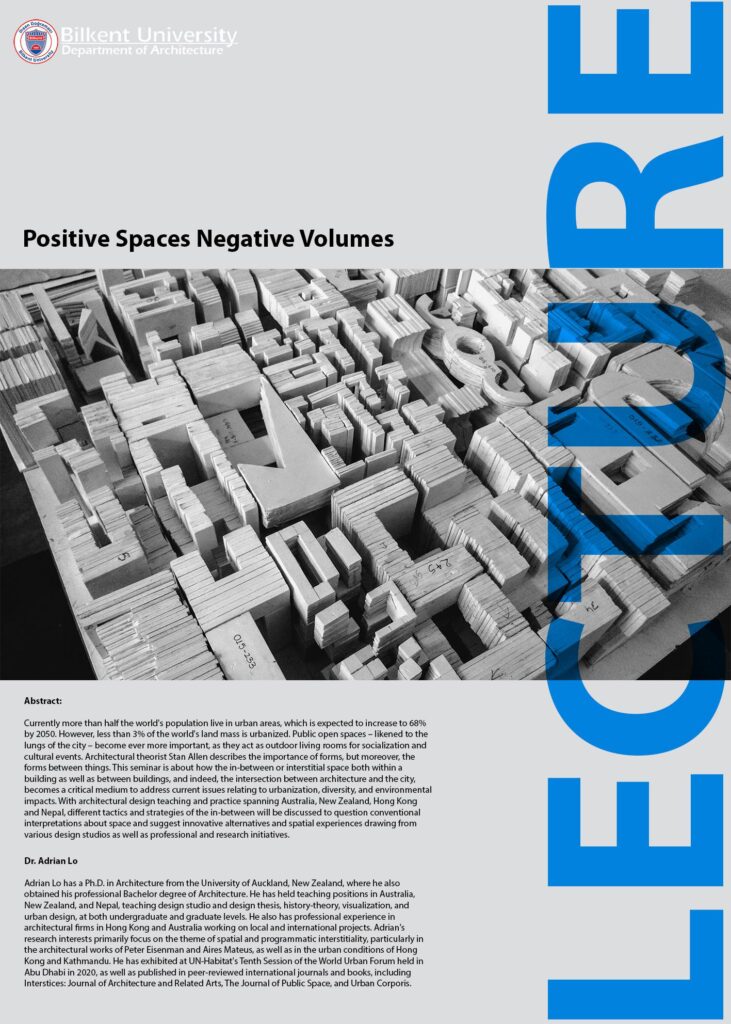
Currently more than half the world’s population live in urban areas, which is expected to increase to 68% by 2050. However, less than 3% of the world’s land mass is urbanized. Public open spaces – likened to the lungs of the city – become ever more important, as they act as outdoor living rooms for socialization and cultural events. Architectural theorist Stan Allen describes the importance of forms, but moreover, the forms between things. This seminar is about how the in-between or interstitial space both within a building as well as between buildings, and indeed, the intersection between architecture and the city, becomes a critical medium to address current issues relating to urbanization, diversity, and environmental impacts. With architectural design teaching and practice spanning Australia, New Zealand, Hong Kong and Nepal, different tactics and strategies of the in-between will be discussed to question conventional interpretations about space and suggest innovative alternatives and spatial experiences drawing from various design studios as well as professional and research initiatives.
Biography:
Adrian Lo has a Ph.D. in Architecture from the University of Auckland, New Zealand, where he also obtained his professional Bachelor degree of Architecture. He has held teaching positions in Australia, New Zealand, and Nepal, teaching design studio and design thesis, history-theory, visualization, and urban design, at both undergraduate and graduate levels. He also has professional experience in architectural firms in Hong Kong and Australia working on local and international projects. Adrian’s research interests primarily focus on the theme of spatial and programmatic interstitiality, particularly in the architectural works of Peter Eisenman and Aires Mateus, as well as in the urban conditions of Hong Kong and Kathmandu. He has exhibited at UN-Habitat’s Tenth Session of the World Urban Forum held in Abu Dhabi in 2020, as well as published in peer-reviewed international journals and books, including Interstices: Journal of Architecture and Related Arts, The Journal of Public Space, and Urban Corporis.

